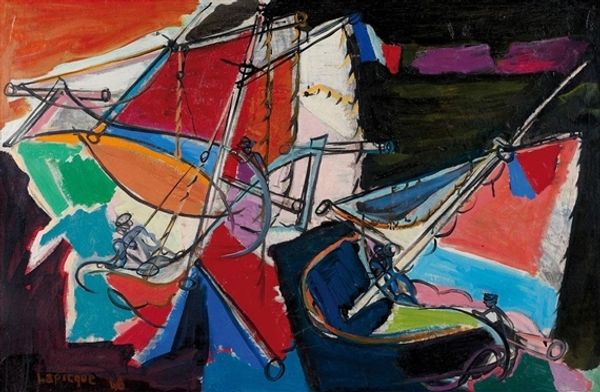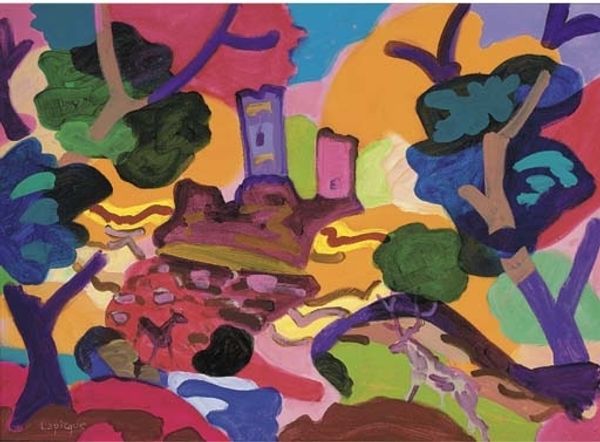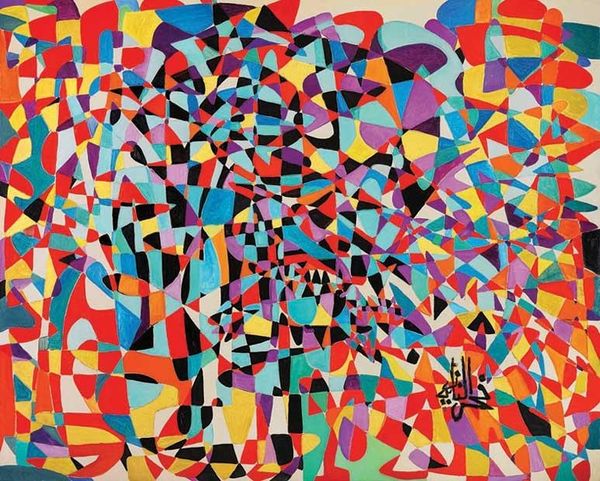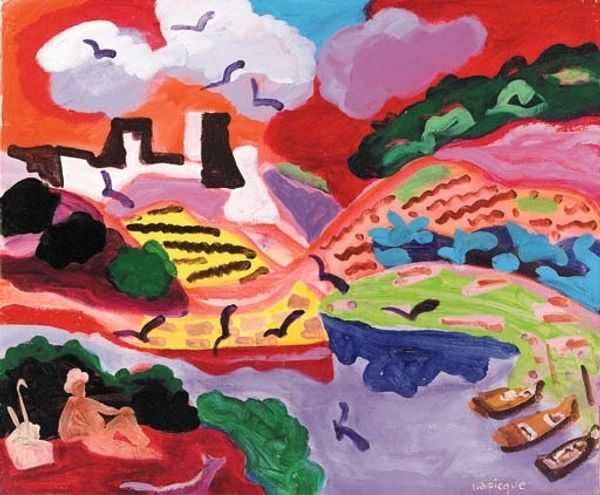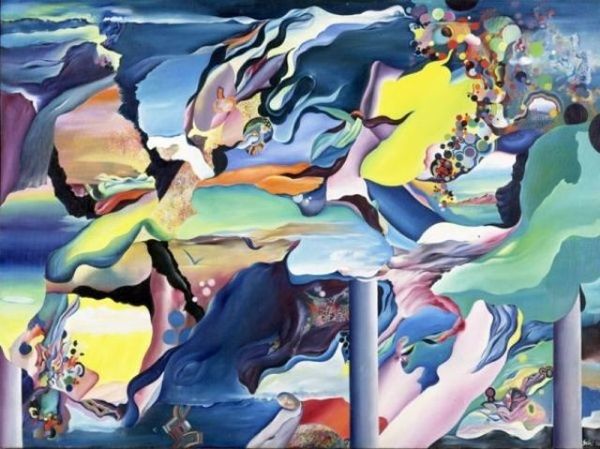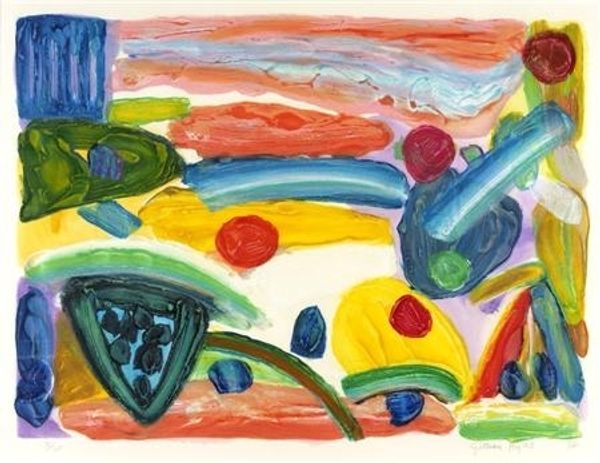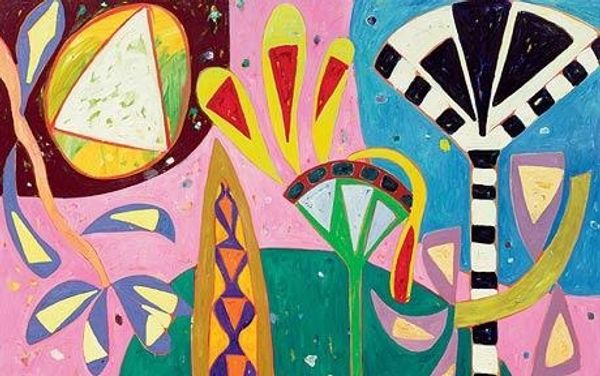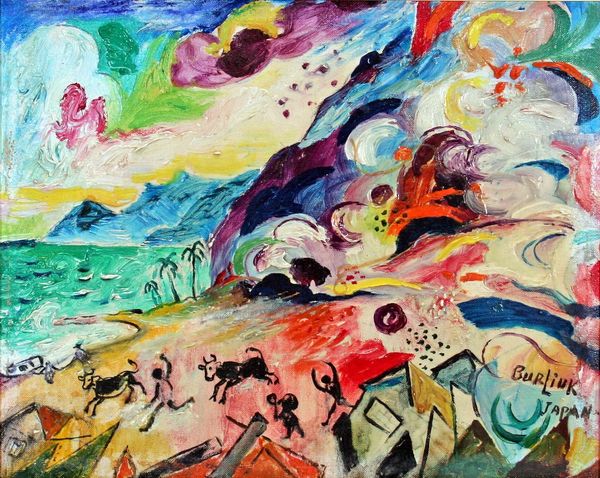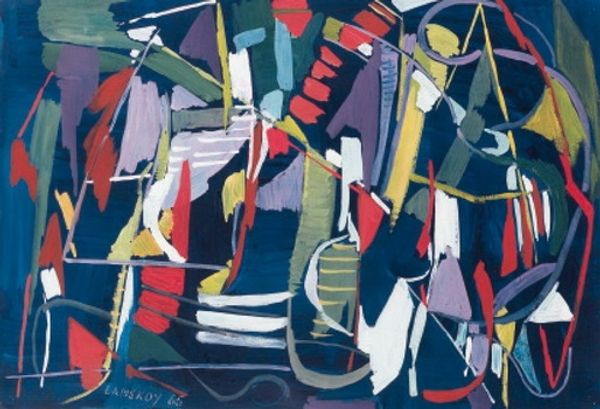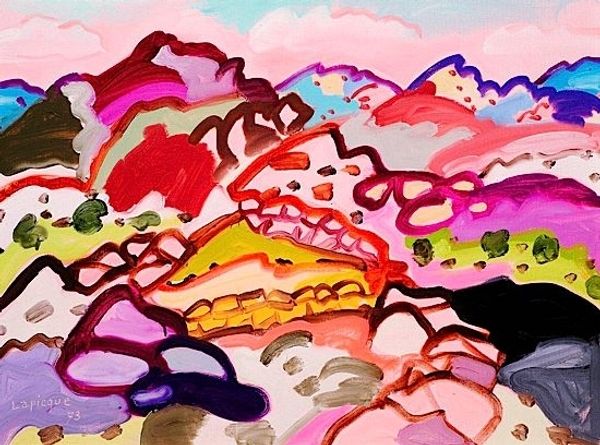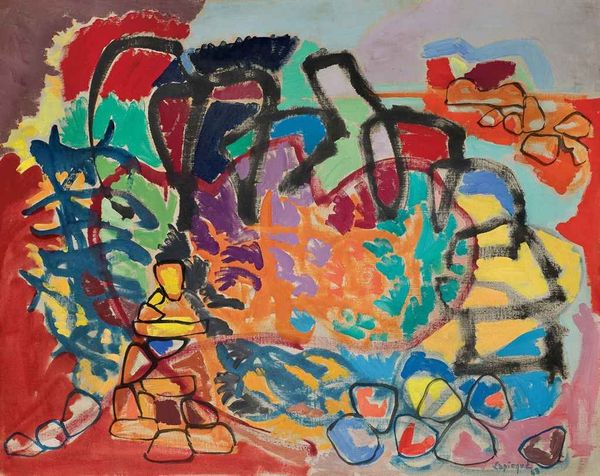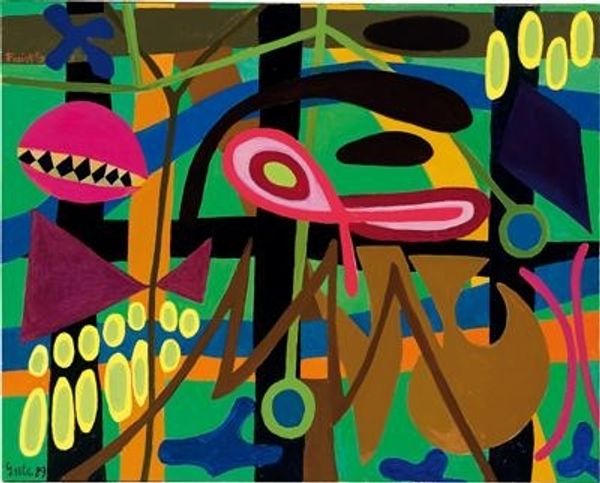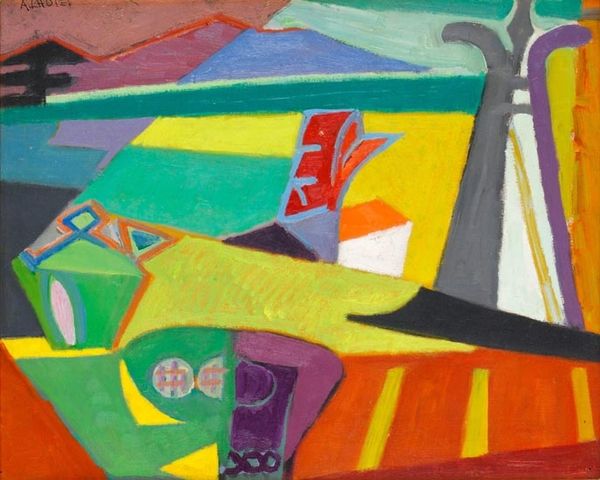
Copyright: Charles Lapicque,Fair Use
Editor: This is Charles Lapicque’s *Cimetière marin en Hollande,* or *Seaside Cemetery in Holland,* painted in 1974 with acrylic on canvas. The colors are so vibrant! What I find interesting is the seeming tension between the title, hinting at mortality and the calmness of a cemetery, and the energetic color palette. How do you interpret this piece? Curator: The "seaside cemetery" Lapicque depicts invites a socio-political reading, especially considering the Netherlands' historical relationship with the sea. Reclamation, loss, and the constant negotiation between land and water shaped the Dutch identity. The juxtaposition of the pastoral – cows, windmills – with the title's somber suggestion hints at the constant struggle and perhaps the ultimate futility of human endeavors against nature's power. The bold colors might not necessarily contradict the somber theme; rather, they could symbolize the enduring spirit and vibrancy of life in the face of such realities. Do you see how the composition plays with this tension, too? Editor: I do. It’s almost like the windmills and cows, which suggest rural prosperity, are defiant assertions against the relentless sea, but the “cemetery” aspect suggests they will be overtaken by it. How might this fit into Lapicque's wider body of work? Curator: Lapicque, trained as a scientist, often explored perception and the ways we construct reality. Here, he might be using this Dutch scene to question ideas of permanence and national identity, suggesting that even the most cultivated landscapes are subject to natural and historical forces. His use of "naive art" stylings almost amplifies the raw tension here. The colors feel purposeful, yes? How might popular culture shape those intentions, with the bright expressionistic use of acrylic? Editor: Yes, now that you mention it, the vibrant colors give it almost a pop-art sensibility; clashing but attention-grabbing! Thanks! I learned a lot today about Lapicque! Curator: Indeed, it's in this intersection of historical context, cultural symbolism, and artistic choices that the true richness of the work emerges. It makes me think of our own responsibilities in building history!
Comments
No comments
Be the first to comment and join the conversation on the ultimate creative platform.

